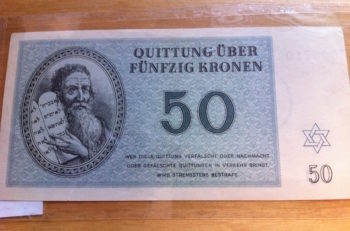My Bachelor's is in history.
They were sore losers. The terms imposed on Germany after the treaty of Versailles was no different than the terms Germany imposed on France after the Franco Prussian war
Treaty of Versailles (1871) - Wikipedia
Th terms of the treaty included a war indemnity of five billion francs to be paid by France to Germany. The German army would continue to occupy parts of France until the payment was complete. The treaty also recognized Wilhelm I as the Kaiser of the newly united German Empire. Preliminary discussion began on the cession of Alsaceand the Moselle region of Lorraine, to Germany. Despite Bismarck's objections, Moltke and his generals insisted that the territory was necessary as a defensive barrier. Bismarck opposed the annexation because he did not wish to make Germany a permanent enemy of France.[2] The portion annexed of Alsace-Lorraine was later slightly reduced at the Treaty of Frankfurt, allowing France to retain the Territory of Belfort.
So the Germans in 1871 occupied French territory, took their land(Alsace Lorraine was the industrial heartland of France) and made then pay for the war.
This was common practice in Europe when you lost a war. You paid reparations and lost land.
Consider the treaty the Germans imposed on the Russians when the Russians signed an armstice during WW1
Treaty of Brest-Litovsk - Wikipedia

When the Herero lost to the Germans they were driven into the desert to starve and die.
The German economy recovered completely by 1923.
From 1924-1929 is known as the Golden Age of the Weimer Republic
If the Treaty of Versailles was so harsh why did the German evonomy recover so fast after the war?
The Golden Age of Weimar

An artistic portrayal of urban life during the golden age
Th years 1924-29 are often described as the ‘Golden Age of Weimar’ because of their stability, economic security and improved living standards – at least in relation to previous years. The seeds of German recovery were planted in the autumn of 1923 when Gustav Stresemann was elevated to the chancellorship. Stresemann and his ministers formulated plans to arrest the hyperinflation crisis by introducing a new currency, the Rentenmark, and fixed its value to gold prices. The government announced its determination to meet reparations payments and sought international assistance to do so. The US-led Dawes Plan was finalised in April 1924 and implemented four months later.
Between 1924 and 1929 the dying German economy was injected with more than $25 billion of foreign money. More than half of this money came from American loans; most of the rest was organised by American bankers acting as intermediaries. The American government and US corporations also provided Germany with financial and industrial expertise. All this support contributed to a surge in German production during the mid-1920s. New factories were constructed or converted, many using newly developed mechanisation and assembly line techniques. The restoration of reparation payments saw France and Belgium withdraw from the Ruhr in mid-1925, freeing up Germany’s industrial resources there. German economic growth after 1924 exceeded that of France and Britain. By 1929 Germany was producing 33 per cent more than before the war and had regained her mantle as the second-highest producing industrial nation after the US.
You're juelzing hard for the extermination of 5.5 million people, + 20 million Slavs, Africans, Poles, Roma ect
Germans didn't believe Jews to be white. They believed that Jews, Slavs ECT were untermensch.
They created a whole racial science behind it. Where do you get the idea it was economic warfare and not racial?


 ) get their daps off of it
) get their daps off of it

 It doesnt say "pray for them but dont give them any help".. This is why I said to keep your prayers to yourself because you're not sincere about it...
It doesnt say "pray for them but dont give them any help".. This is why I said to keep your prayers to yourself because you're not sincere about it...




